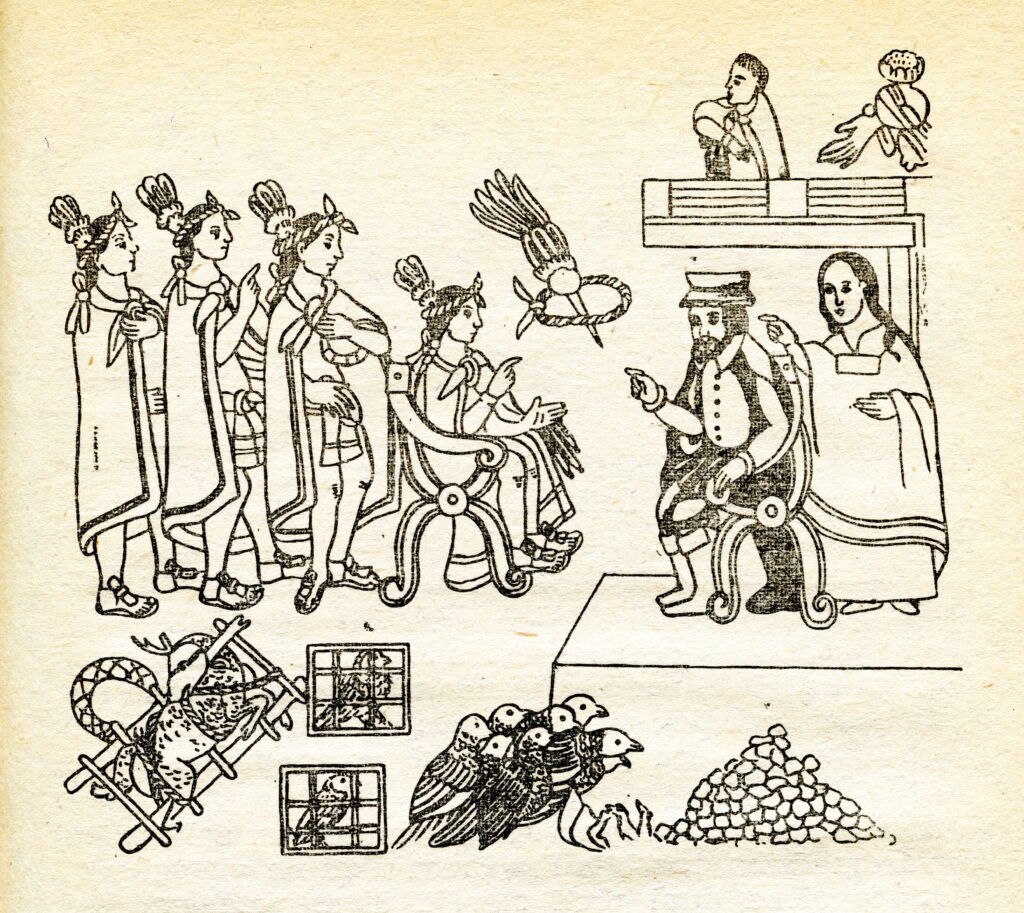ARTS AND CULTURE EDITOR – SOPHIA KUSSEL
ORIGINALLY PRINTED ON NOV 10, 2022
Oct. 14, 2022 – Jan. 08, 2023, The San Antonio Museum of Art will be holding the exhibit; Traitor, Survivor, Icon: The Legacy of La Malinche. This exhibit is the first to take a comprehensive look into the story of La Malinche, featuring an extensive array of art by numerous artists who chose La Malinche as their muse. La Malinche has been the subject of paintings, literature and intrigue for centuries. This exhibit will explore her influence on art and the symbol she has become through the lenses of another.
La Malinche’s birth date is still unknown but is estimated to be sometime during the early 1500s near the Coatzacoalcos River, east of the Aztec Empire. Historians theorize she was the daughter of a Nahua woman and Aztec cacique; her father’s standing provided opportunities to have some semblance of education, a crucial factor that was a requirement to become the foremost interpreter for the Spanish later. During early adolescence, she was either kidnapped or sold as a slave to the Chontal Maya, the same Maya that would eventually give La Malinche to the conquistadors.
During the begining of the conquest of Mesoamerica, the Maya presented a group of around 20 enslaved women as peace offerings, hoping that the gift would ensure the protection of their lives from the Spaniard’s ongoing bloodshed. Among these women was the young La Malinche, a girl alone in the world whose gift of linguistics separated her from the rest. La Malinche could fluently speak the Chontal Maya language, which she learned in captivity, and the language spoken by the Aztecs— Nahuatl. Above all, she could speak Spanish, quickly making her an invaluable asset to Cortés and his men. La Malinche was an intelligent, observant girl with the advantage of having insight into the costumes and lives of the Aztecs. This cemented her as a valued interpreter and a trusted advisor for Cortés. La Malinche relayed the details of conspiracies and incoming attacks from Montezuma.
The Spanish would have never successfully conquered Mesoamerica without her. At some point, La Malinche gave birth to a son with Cortés but her romantic relationship lacks historical evidence— With Cortés seldom even mentioning her. Her relationship with Cortés has become mythicized in popular culture as a love affair, though there is little historical evidence to corroborate this. Regardless, she went on to marry a Spanish hidalgo and died less than a decade after the conquest of Mexico-Tenochtitlan. We know little about La Malinche— her story is accompanied by rabid bias and made murky by centuries of conflicting narratives. What we do know comes from contemporary writings that historians have desperately strewn together. Even Hernán Cortés fleetingly mentioned her twice in his letters, referring to her by name only in his fifth letter.

La Malinche was a Nahua tribal woman enslaved to the Aztec Empire and the Spanish, a translator to the conquistador, Hernán Cortés and the mother of his first son and the first Mestizo. She was a girl known by many names. To the Spanish, she was ‘La Malinche’ and to the Nahua, she was ‘Malintzin.’ On the day of her Catholic baptism, she was named ‘Marina’ preceded by the honorific ‘doña.’ La Malinche was a woman who was known as many different people: the traitor, the temptress, the victim and the survivor all rolled into one figure. It matters who tells the story of La Malinche that metamorphosizes her as a symbol.
Latino activist and blogger, Melanie Mendez-Gonzales, offers insight into the importance of the storyteller, “It is the storyteller who shapes the narrative of La Malinche. For victors of the conquest, La Malinche was said to be a traitor to her people and that her relationship with Hernán Cortés was a love story. But Chicanas recognize the enslaved indigenous girl who survived her enslaver and became a warrior. Maybe it’s because Chicanas can see themselves in La Malinche. This narrative reclaims her name and her legacy and, in turn, reclaims our own power and legacy as Chicanas.” La Malinche is a symbol in a constant state of flux. At times she is a traitor to her people and at others, she is the heroine of the Mexican people. La Malinche is a shapeshifter.
The Traitor, Survivor, Icon: The Legacy of La Malinche exhibit places the many faces of La Malinche front and center through the eyes of countless artists. These artists possess their own narrative of La Malinche. This makes attending the gallery an incredibly insightful experience into Latina identity and the storyteller’s power.